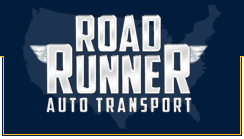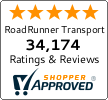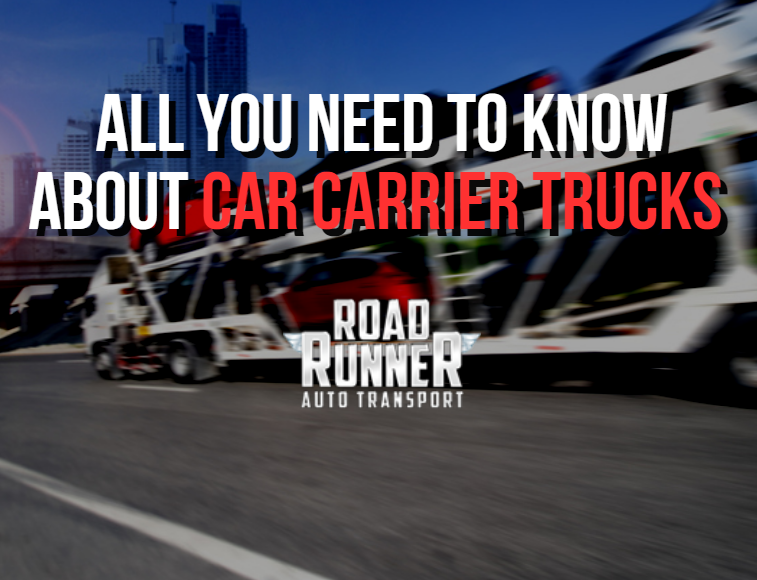
The trusted name in vehicle shipping for over 30 years!
- Track a Shipment
- Dealer Login
- Carrier Login
Speak with a shipping expert
(888) 777-2123

Types Of Car Carriers: All You Need to Know About Auto Transport Carriers
Posted on 04/28/2023
Table of Contents

Types of Car Carriers
You can choose to have your car shipped with several different types of car carrier trucks. They include open-air car carriers, enclosed car carriers, flatbed vehicle carriers, and car carriers with a winch. Each has a specialized purpose, advantages, and average price points.
Open-Air Car Carriers
Open-air car carriers are the car carrier trucks that you will frequently see out on the road, typically delivering cars at dealerships over short distances. They consist of two decks without walls or a roof. Each deck has two flat metal treads wide enough to accommodate tires found on most passenger cars. However, they cannot ship oversized vehicles like RVs or buses or transport two or three-wheeled vehicles such as motorcycles or trikes. These carriers typically have room for 9 to 12 cars at a time.
Open-Air Car Carrier Truck Advantages
Shipping a car on an open-air carrier offers distinct advantages over other options. These carriers are widely available and cost-effective, making them a popular choice for vehicle transportation.
Here are the key benefits:
- Cheapest Option – Open-air is the cheapest option compared to other carriers and provides the most economical shipping solution.
- High Availability – This is the most common type of auto carrier. Around 80% of car shipments use open-air carriers.
- Flexible Dates – Open-air carriers make it easy to secure preferred pickup and delivery dates, and with high availability, you can easily book your preferred dates.
Open car carriers provide a convenient and affordable way to ship your vehicle. Their widespread use and accessibility make them a practical choice for most car shipping needs.
Enclosed Car Carriers
Enclosed car carriers, also known as covered carriers, differ from open-air carriers as they have walls and a roof. Some have a single deck, while larger ones may have two decks. These enclosed auto transport carriers can ship any vehicle that is not oversized, including passenger cars, motorcycles, and trikes.
An enclosed auto transport carrier truck can typically accommodate between 2 and 10 vehicles during shipments, depending on the overall size of the carrier truck and the presence of a second deck. Shipping a vehicle on an enclosed car carrier will usually cost an additional $400 to $700 depending on how much notice you give for your shipment, what time of year during which you are shipping and fuel prices at the time of shipping.
Advantages of Enclosed Car Carrier Trucks
Enclosed car carriers offer enhanced protection for your vehicle during ground transportation. These covered carriers have walls and a roof, unlike open-air carriers.
Here are the some of the benefits:
- Maximum Protection – Shields vehicle from outdoor elements like tree branches, UV rays, rain, hail, and road debris.
- Complete Coverage – Clear advantage over open carriers by providing full coverage and safeguarding your vehicle.
- Multi-Deck Capacity – Some larger enclosed carriers have two decks, accommodating passenger cars, motorcycles, and trikes.
- Varied Capacity – Can hold 2-10 vehicles per shipment, depending on the carrier’s size and number of decks.
Choosing an enclosed carrier ensures your vehicle is shielded from potential damages, offering peace of mind and a secure shipping experience for those with luxury, exotic, or classic cars.
Alternative Types of Car Carriers
Single Car Carrier
A single car carrier is a specialized transportation vehicle designed specifically for hauling a single automobile from one location to another. Unlike multi-car carriers that can transport multiple vehicles at a time, a single car hauler focuses on individual vehicles, offering a more personalized and often expedited service.
Here are some of the features:
- Specialized Transportation – Single car carriers are designed specifically for hauling a single automobile from one location to another.
- Personalized Service – Unlike multi-car carriers, single car haulers focus on individual vehicles, offering a more personalized and often expedited service.
- High-Value Vehicle Transport – A single car hauler is Particularly useful for transporting high-value, luxury, classic, or performance cars that require extra care and attention to prevent damage during transit.
- Enclosed Trailers – Single car haulers can come in the form of enclosed trailers, providing protection from the elements and external hazards, ensuring the vehicle arrives in pristine condition.
- Safety and Security – A single car carrier is popular among car enthusiasts, collectors, and manufacturers who prioritize the safety and security of their vehicles above cost efficiency.
Single car carriers cater to the specialized needs of transporting individual vehicles, particularly high-value ones or requiring extra protection, making them a preferred choice for enthusiasts and manufacturers alike.
Flatbed Car Carriers
Flatbed car carriers are specialized vehicles used primarily for shipping oversized vehicles. These carriers are essential for transporting larger automobiles, recreational vehicles, commercial trucks, and even boats or other oversized loads.
Here are features of flatbed car carriers:
- Oversized Vehicle Transport – Used primarily for shipping oversized cars or vehicles like Humvees, buses, RVs, trailers, commercial trucks, tractors, boats, and more.
- Familiar Sight – You’ve likely seen flatbed haulers on the highway, often tagged with “Caution: Oversized Load” signage.
- Tractor-Trailer Design – Flatbed carriers consist of a tractor (front part with engine and cabin) and a trailer (flatbed rear section).
- Single-Deck Capacity – Flatbed vehicle carriers have only one deck and can typically carry one or two vehicles at a time.
- Motorcycle Transport – For motorcycle shipping, flatbed carriers can typically accommodate 4 to 8 motorcycles at once.
Flatbed car carriers are specialized in transporting oversized and unique vehicles, ensuring safe and efficient delivery of larger automobiles, recreational vehicles, and even boats or oversized loads.
Advantages of Flat Bed Carrier Trucks
The primary advantage of shipping a vehicle on a flatbed car trailer is that these car carriers give you an option for shipping that vehicle. In most cases, flatbed carriers are used for oversized vehicles for auto transport.
There are several types of flatbed trailers, all with unique advantages and differences:
- Flat-Deck – The most common type of flatbed trailer but rarely used for car shipping due to their higher clearance causing issues with loading/unloading and height restrictions, are simple flat and level platforms that occasionally transport motorcycles but seldom oversized vehicles.
- Lowboy (Drop-Deck) – A flatbed trailer with a dropped deck between the wheels for increased clearance, allows taller vehicles to be legally shipped by providing enough clearance to pass through tunnels and under bridges, and facilitates faster and easier loading of vehicles requiring forklift placement due to the reduced lifting height.
- Gooseneck – These trailers provide a more secure and slightly faster transit for cargo because they rely on only a rear axle, as opposed to both front and rear axles.
Winch Car Carriers
Car carriers with a winch are primarily used for shipping inoperable cars, including scrap, junk, or new cars with temporary engine issues. They occasionally ship travel trailers as well.
Advantages of using a winch car carrier:
- Cost-Effective – Cheaper than long-distance towing for non-running cars.
- Faster Transit – Faster transit time, as your car will likely be the only one in the shipment.
Combine Into One Big Cost Graphic Here
Car Carrier Loading Process
Car carriers employ various loading methods to ensure the safe and efficient ground transportation of vehicles. These methods are designed to accommodate different types of vehicles and optimize space utilization on the carrier.
Open-Air Car Loading Process
The vast majority of car shipments are performed using open-air car haulers. These car carriers have two decks, one right on top of another, to maximize the number of cars that can be transported in each shipment, leading to a maximum profit for the car shipping company.
The open-air car loading process is as follows:
- Lower Top Deck – The back half of the top deck is lowered to the ground using hydraulics, forming an upward ramp.
- Load Cars onto Top Deck – Cars are driven onto the top deck using the metal treads on the ramp.
- Raise Top Deck – Once the top deck is loaded, it is raised back to its original position.
- Load Cars onto Bottom Deck – Cars are then loaded onto the bottom deck, if space permits.
- Secure Cars – All vehicles are secured using tiedown straps to prevent movement during transit.
The top deck is always loaded first and unloaded last to prevent damage to vehicles on the lower deck. External ramps or extensions may be used depending on the specific car carrier truck.
Enclosed Car Carrier Loading Process
Enclosed car carriers also use hydraulics to load and unload vehicles, but the process differs from open-air carriers. The enclosed car carrier loading process is as follows:
- Lower Back Wall – The back wall of the enclosed carrier flattens outward and lowers to the ground using hydraulics.
- Drive Vehicle onto Back Wall – A vehicle is driven onto the lowered back wall.
- Lift Back Wall and Vehicle – The wall and car are then lifted to the trailer’s level using hydraulics.
- Drive Vehicle into Carrier – The car is driven from the back wall into the enclosed carrier.
- Repeat for Additional Vehicles – If the carrier has two decks, the process is repeated, with the back wall and vehicle lifted higher to reach the upper deck.
The reverse process is followed when unloading vehicles from an enclosed carrier. Multi-deck carriers utilize hydraulics to raise the back wall and vehicle to the appropriate height for loading and unloading.
Securing Cars on Car Carriers
Safely securing vehicles to the carrier is required to prevent damage during transport. The process of securing cars on car haulers involves:
- Attach Tiedown Straps – Tiedown straps are attached to the wheels and/or corresponding chassis parts at four points on the vehicle.
- Secure the Straps – The other ends of the straps are securely attached to the carrier.
- Adjust the Tension – The auto transport driver ensures that the straps are tightened sufficiently to immobilize the car during transport without causing damage.
- Double-Check the Straps – The driver performs a final check to ensure that all straps are properly secured and tensioned.
The tiedown straps are designed to immobilize the vehicle during transport over long short distances, preventing any potential damage from movement or contact with other vehicles on the carrier.
FAQ
How many cars can a typical car carrier hold?
A typical open car carrier can hold a maximum of 9 to 12 cars depending on the overall size of the carrier itself and the sizes of the vehicles it is hauling.
Do cars ever fall off car carriers?
Cars do not fall off of open-air carriers or any other type of car carrier because they are secured to the carrier with extra strong straps in several places on the car.
Where can car carriers drop cars off?
Car carriers can deliver vehicles on most streets, except when the street is too narrow, lacks a safe unloading zone, has clearance issues, or is subject to local vehicle size/weight restrictions. In such cases, you’ll need to meet the carrier at a nearby spacious area, like a large parking lot, where your car can be safely unloaded away from traffic. Your car shipping company will discuss these details with you before booking the shipment.
Instant Car Shipping Quote
Calculate your car shipping rate in 3 easy steps!
Types Of Car Carriers: All You Need to Know About Auto Transport Carriers
Posted on 04/28/2023
Table of Contents

Types of Car Carriers
You can choose to have your car shipped with several different types of car carrier trucks. They include open-air car carriers, enclosed car carriers, flatbed vehicle carriers, and car carriers with a winch. Each has a specialized purpose, advantages, and average price points.
Open-Air Car Carriers
Open-air car carriers are the car carrier trucks that you will frequently see out on the road, typically delivering cars at dealerships over short distances. They consist of two decks without walls or a roof. Each deck has two flat metal treads wide enough to accommodate tires found on most passenger cars. However, they cannot ship oversized vehicles like RVs or buses or transport two or three-wheeled vehicles such as motorcycles or trikes. These carriers typically have room for 9 to 12 cars at a time.
Open-Air Car Carrier Truck Advantages
Shipping a car on an open-air carrier offers distinct advantages over other options. These carriers are widely available and cost-effective, making them a popular choice for vehicle transportation.
Here are the key benefits:
- Cheapest Option – Open-air is the cheapest option compared to other carriers and provides the most economical shipping solution.
- High Availability – This is the most common type of auto carrier. Around 80% of car shipments use open-air carriers.
- Flexible Dates – Open-air carriers make it easy to secure preferred pickup and delivery dates, and with high availability, you can easily book your preferred dates.
Open car carriers provide a convenient and affordable way to ship your vehicle. Their widespread use and accessibility make them a practical choice for most car shipping needs.
Enclosed Car Carriers
Enclosed car carriers, also known as covered carriers, differ from open-air carriers as they have walls and a roof. Some have a single deck, while larger ones may have two decks. These enclosed auto transport carriers can ship any vehicle that is not oversized, including passenger cars, motorcycles, and trikes.
An enclosed auto transport carrier truck can typically accommodate between 2 and 10 vehicles during shipments, depending on the overall size of the carrier truck and the presence of a second deck. Shipping a vehicle on an enclosed car carrier will usually cost an additional $400 to $700 depending on how much notice you give for your shipment, what time of year during which you are shipping and fuel prices at the time of shipping.
Advantages of Enclosed Car Carrier Trucks
Enclosed car carriers offer enhanced protection for your vehicle during ground transportation. These covered carriers have walls and a roof, unlike open-air carriers.
Here are the some of the benefits:
- Maximum Protection – Shields vehicle from outdoor elements like tree branches, UV rays, rain, hail, and road debris.
- Complete Coverage – Clear advantage over open carriers by providing full coverage and safeguarding your vehicle.
- Multi-Deck Capacity – Some larger enclosed carriers have two decks, accommodating passenger cars, motorcycles, and trikes.
- Varied Capacity – Can hold 2-10 vehicles per shipment, depending on the carrier’s size and number of decks.
Choosing an enclosed carrier ensures your vehicle is shielded from potential damages, offering peace of mind and a secure shipping experience for those with luxury, exotic, or classic cars.
Alternative Types of Car Carriers
Single Car Carrier
A single car carrier is a specialized transportation vehicle designed specifically for hauling a single automobile from one location to another. Unlike multi-car carriers that can transport multiple vehicles at a time, a single car hauler focuses on individual vehicles, offering a more personalized and often expedited service.
Here are some of the features:
- Specialized Transportation – Single car carriers are designed specifically for hauling a single automobile from one location to another.
- Personalized Service – Unlike multi-car carriers, single car haulers focus on individual vehicles, offering a more personalized and often expedited service.
- High-Value Vehicle Transport – A single car hauler is Particularly useful for transporting high-value, luxury, classic, or performance cars that require extra care and attention to prevent damage during transit.
- Enclosed Trailers – Single car haulers can come in the form of enclosed trailers, providing protection from the elements and external hazards, ensuring the vehicle arrives in pristine condition.
- Safety and Security – A single car carrier is popular among car enthusiasts, collectors, and manufacturers who prioritize the safety and security of their vehicles above cost efficiency.
Single car carriers cater to the specialized needs of transporting individual vehicles, particularly high-value ones or requiring extra protection, making them a preferred choice for enthusiasts and manufacturers alike.
Flatbed Car Carriers
Flatbed car carriers are specialized vehicles used primarily for shipping oversized vehicles. These carriers are essential for transporting larger automobiles, recreational vehicles, commercial trucks, and even boats or other oversized loads.
Here are features of flatbed car carriers:
- Oversized Vehicle Transport – Used primarily for shipping oversized cars or vehicles like Humvees, buses, RVs, trailers, commercial trucks, tractors, boats, and more.
- Familiar Sight – You’ve likely seen flatbed haulers on the highway, often tagged with “Caution: Oversized Load” signage.
- Tractor-Trailer Design – Flatbed carriers consist of a tractor (front part with engine and cabin) and a trailer (flatbed rear section).
- Single-Deck Capacity – Flatbed vehicle carriers have only one deck and can typically carry one or two vehicles at a time.
- Motorcycle Transport – For motorcycle shipping, flatbed carriers can typically accommodate 4 to 8 motorcycles at once.
Flatbed car carriers are specialized in transporting oversized and unique vehicles, ensuring safe and efficient delivery of larger automobiles, recreational vehicles, and even boats or oversized loads.
Advantages of Flat Bed Carrier Trucks
The primary advantage of shipping a vehicle on a flatbed car trailer is that these car carriers give you an option for shipping that vehicle. In most cases, flatbed carriers are used for oversized vehicles for auto transport.
There are several types of flatbed trailers, all with unique advantages and differences:
- Flat-Deck – The most common type of flatbed trailer but rarely used for car shipping due to their higher clearance causing issues with loading/unloading and height restrictions, are simple flat and level platforms that occasionally transport motorcycles but seldom oversized vehicles.
- Lowboy (Drop-Deck) – A flatbed trailer with a dropped deck between the wheels for increased clearance, allows taller vehicles to be legally shipped by providing enough clearance to pass through tunnels and under bridges, and facilitates faster and easier loading of vehicles requiring forklift placement due to the reduced lifting height.
- Gooseneck – These trailers provide a more secure and slightly faster transit for cargo because they rely on only a rear axle, as opposed to both front and rear axles.
Winch Car Carriers
Car carriers with a winch are primarily used for shipping inoperable cars, including scrap, junk, or new cars with temporary engine issues. They occasionally ship travel trailers as well.
Advantages of using a winch car carrier:
- Cost-Effective – Cheaper than long-distance towing for non-running cars.
- Faster Transit – Faster transit time, as your car will likely be the only one in the shipment.
Combine Into One Big Cost Graphic Here
Car Carrier Loading Process
Car carriers employ various loading methods to ensure the safe and efficient ground transportation of vehicles. These methods are designed to accommodate different types of vehicles and optimize space utilization on the carrier.
Open-Air Car Loading Process
The vast majority of car shipments are performed using open-air car haulers. These car carriers have two decks, one right on top of another, to maximize the number of cars that can be transported in each shipment, leading to a maximum profit for the car shipping company.
The open-air car loading process is as follows:
- Lower Top Deck – The back half of the top deck is lowered to the ground using hydraulics, forming an upward ramp.
- Load Cars onto Top Deck – Cars are driven onto the top deck using the metal treads on the ramp.
- Raise Top Deck – Once the top deck is loaded, it is raised back to its original position.
- Load Cars onto Bottom Deck – Cars are then loaded onto the bottom deck, if space permits.
- Secure Cars – All vehicles are secured using tiedown straps to prevent movement during transit.
The top deck is always loaded first and unloaded last to prevent damage to vehicles on the lower deck. External ramps or extensions may be used depending on the specific car carrier truck.
Enclosed Car Carrier Loading Process
Enclosed car carriers also use hydraulics to load and unload vehicles, but the process differs from open-air carriers. The enclosed car carrier loading process is as follows:
- Lower Back Wall – The back wall of the enclosed carrier flattens outward and lowers to the ground using hydraulics.
- Drive Vehicle onto Back Wall – A vehicle is driven onto the lowered back wall.
- Lift Back Wall and Vehicle – The wall and car are then lifted to the trailer’s level using hydraulics.
- Drive Vehicle into Carrier – The car is driven from the back wall into the enclosed carrier.
- Repeat for Additional Vehicles – If the carrier has two decks, the process is repeated, with the back wall and vehicle lifted higher to reach the upper deck.
The reverse process is followed when unloading vehicles from an enclosed carrier. Multi-deck carriers utilize hydraulics to raise the back wall and vehicle to the appropriate height for loading and unloading.
Securing Cars on Car Carriers
Safely securing vehicles to the carrier is required to prevent damage during transport. The process of securing cars on car haulers involves:
- Attach Tiedown Straps – Tiedown straps are attached to the wheels and/or corresponding chassis parts at four points on the vehicle.
- Secure the Straps – The other ends of the straps are securely attached to the carrier.
- Adjust the Tension – The auto transport driver ensures that the straps are tightened sufficiently to immobilize the car during transport without causing damage.
- Double-Check the Straps – The driver performs a final check to ensure that all straps are properly secured and tensioned.
The tiedown straps are designed to immobilize the vehicle during transport over long short distances, preventing any potential damage from movement or contact with other vehicles on the carrier.
FAQ
How many cars can a typical car carrier hold?
A typical open car carrier can hold a maximum of 9 to 12 cars depending on the overall size of the carrier itself and the sizes of the vehicles it is hauling.
Do cars ever fall off car carriers?
Cars do not fall off of open-air carriers or any other type of car carrier because they are secured to the carrier with extra strong straps in several places on the car.
Where can car carriers drop cars off?
Car carriers can deliver vehicles on most streets, except when the street is too narrow, lacks a safe unloading zone, has clearance issues, or is subject to local vehicle size/weight restrictions. In such cases, you’ll need to meet the carrier at a nearby spacious area, like a large parking lot, where your car can be safely unloaded away from traffic. Your car shipping company will discuss these details with you before booking the shipment.
"Save time looking and just call Roadrunner Auto Transport - they truly helped make my move easier!"
Trish A.
Miami, FL


"When I bought a car out of state I was unsure what to expect with the shipping. RoadRunner made everything so easy!"
Jenna D.
Lufkin, TX


"The RoadRunner agent we spoke with answered all of our questions and kept us in the loop throughout the shipment."
Christopher G.
Cincinnati, OH


"From the time of quote to the pick up of my vehicle and the delivery there was a very good communication."
Andres M.
Oakland, CA


Frequently Asked Questions
Get answers to some of the most commonly asked questions about the vehicle transportation process.








